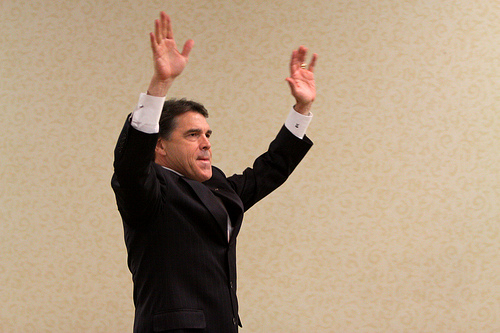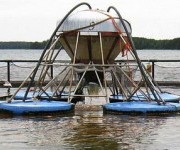 This article originally appeared on Gilt Taste.
This article originally appeared on Gilt Taste.
My brother, in a mad dash to get dinner on the table, once made a crucial error. Instead of reaching for his stepdaughter’s plastic Barbie plate that neatly defined the space for vegetables, carbs, and protein, he put down three overlapping portions of the three unlike items. When he presented this intimate arrangement to my niece, bedlam ensued. Tears poured down. Fists pounded. Dinner, The Sequel, soon followed, with food properly meted out to their respective containers. With calm finally restored, my niece let forth one of our more memorable family utterances. “Keep the food separate” she said. “That’s my motto.”
As it turns out, this may have to become the motto for the fish-farming industry.
This past week, the disease Infectious Salmon Anemia (ISA) was first discovered in wild salmon off the coast of British Columbia. This was something people in the anti-farmed salmon camp have been anticipating, perhaps even greeting the news as validation. In the last decade ISA mutated from its benign wild state in densely packed populations of farmed salmon until it finally became a virulent epidemic. The disease has done serious damage to the European farmed salmon industry; the Chilean salmon industry was leveled and is only now starting to hobble back to life. Until now, though, ISA had not reached the heartland of the world’s last truly robust wild salmon populations. British Columbia and Alaska are home to wild runs of hundreds of millions fish a year and contribute billions of dollars to the region’s economy. Should ISA make the jump from the farm to the wild in those parts we will be facing a serious economic as well as a potential ecological catastrophe.
The fish farming industry is understandably skeptical. The Canadian government’s high profile “Cohen Commission” is just now in evidentiary hearings on the question of farmed salmon’s impact on the wild and more than one fish farmer has suggested that the anti-aquaculturists have gone looking for the ISA disease rather than applying a scientific method to judge its real threat. But whatever the case, many “what ifs” are being suggested if ISA has indeed taken up Canadian residency.
Which brings me back to my niece’s compartmentalized Barbie plate. In a world where nearly 50 percent of our seafood is farmed, we really don’t have the luxury to say we will no longer farm fish and shellfish. The demand is too great. The industry is too entrenched. But with the alleged appearance of ISA on America’s West Coast we have to think about how we might separate the farms from the wild.
Fortunately, good technology and methods already exist to make this happen, and have lots of benefits besides. The first and most obvious way to get farmed fish out of the way of wild fish would be to put them into land-based tanks. While energy intensive, “recirculating aquaculture systems” not only keep wild fish from catching farmed-fish diseases, they also do the reverse, providing a sterile environment where fish can thrive. Temperature and water current can be carefully regulated, which adds to fish health and growth rates. Using these advantages, companies like SweetSpring of Washington state have managed to grow coho salmon in containment that reach maturity in a year and the market at a reasonable price. Closed containment’s other major advantage is the ability to create fish farms close to markets. In an experimental facility in downtown Baltimore, Yonathan Zohar, the director of the Center for Marine Biotechnology at the University of Maryland, is growing a variety of chefs’ favorite species in containment and providing fish to local restaurants that are steps rather than miles away.
The second, slightly lower tech way is to choose species and waterways that do not interact with the wild. Farmed “striped bass” are in fact a hybrid of striped bass and white bass that are sterile and cannot interbreed with wild populations. They are grown in human-made ponds and raceways that have limited interaction with the surrounding environment. It’s interesting to compare the fates of salmon and striped bass since the modern age of aquaculture was born. Whereas wild salmon populations have generally declined, striped bass have not. In fact, striped bass populations have been largely rebuilt over the last two decades even as the farmed striped bass industry grew. Today, 60 percent of all striped bass eaten are farmed.
The third path to separation is markedly less popular among conservationists. Instead of removing fish from the ocean, “offshore aquaculture” seeks to move fish farms away from sensitive coastal migration routes and put them offshore where there is little or no interaction with similar species. This, of course, has its problems. Wave action is considerably more extreme far offshore and a heavy storm can make mincemeat of the best technology. Moreover, an aquaculture operation three or more miles from land incurs a pretty heavy gasoline tax. Indeed, depending on how you run the numbers, a recirculating land-based facility can come off as more fuel efficient that an offshore pen.
The fourth and final way to separate things is on a hemispheric scale. Despite its salmon farming industry, salmon are not endemic to Chile. The equator acts as a “thermal barrier” to salmonids and so there are no wild populations in the global south farmed salmon can impact. But damage has been done: The introduction of salmon and trout to the region has probably dealt a blow to indigenous fish we never even had data on. A family of southern hemisphere fish called galaxiids probably suffered considerably from the competition. But a cynical argument can be made that this is already old news, and we needn’t worry about lost, unknown fish so much so long as farm-based diseases do not cross back up to the north and infect salmon populations there.
Whichever of these four avenues humanity chooses it’s clear now that wild populations will increasingly be exposed to the vagaries of a globalized farmed fish sector. Nevertheless we may still have time to keep the farmed food and the wild food separate. For the sake of both, it might be worth trying.



